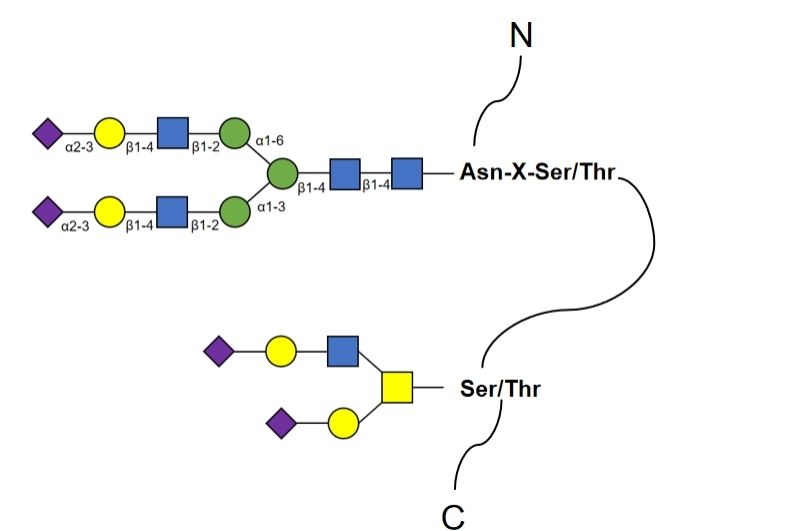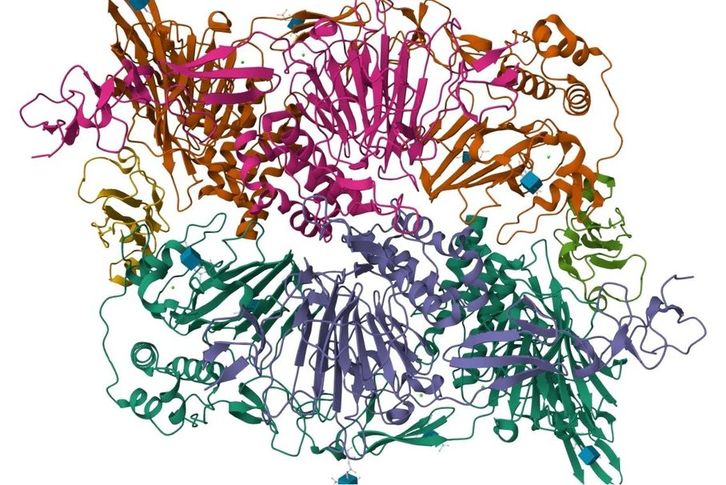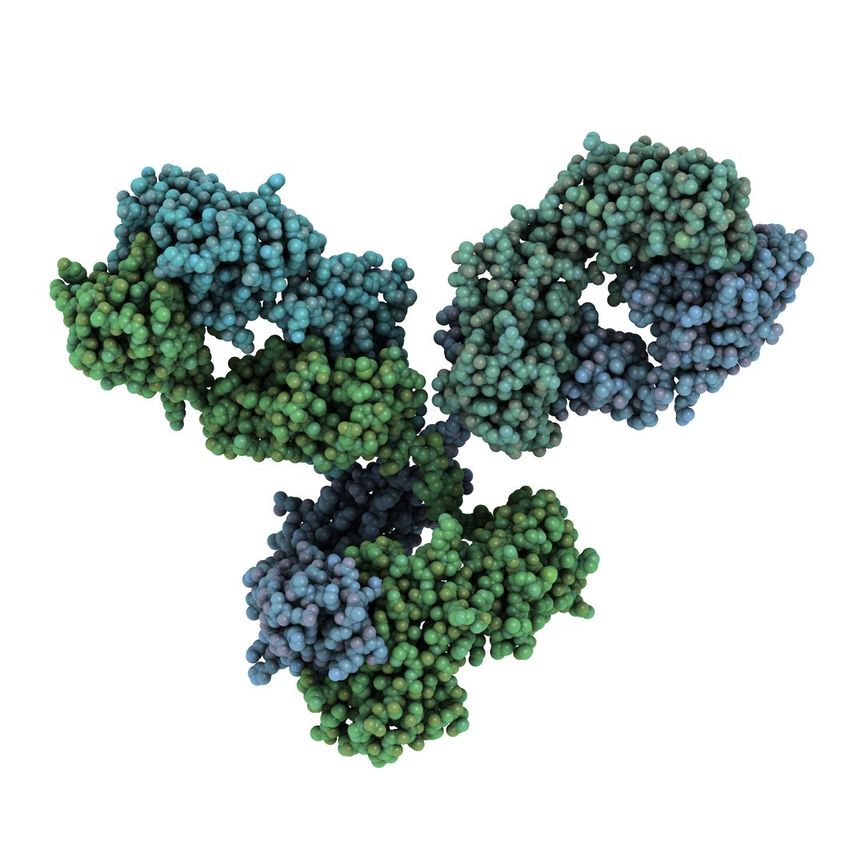Glycoinformatics-assisted Single-cell Glycomics Analysis Service
Unlocking the Secrets of Single-cell Glycomics Diversity-Glycoinformatics at Your Service
Changes in the dynamic expression of cell surface glycans and glycoconjugates have been associated with the onset and progression of a wide range of human diseases, and they play a key role in the regulation of a variety of cellular processes and immune functions, as well as intercellular and cell-pathogen interactions. Therefore, glycomics analysis of cellular glycans is necessary. Currently, CD BioGlyco has accumulated deep experience in the field of Glycoinformatics Services, and based on this, we provide systematic single-cell glycomics analysis services to our clients.
Cytometry time of flight (CyTOF)
We provide CyTOF to analyze the expression and remodeling of single-cell surface glycans. Before identifying specific glycans that are remodeled, single-cell linkage determination is used to identify predictive prerequisite cells and quantify glycans using the midguard signal intensity (MSI) of glycopeptides from cell surface donors. Additionally, we provide electrospray ionization-mass spectrometry (ESI-MS) or matrix-assisted laser desorption/ionization-time of flight MS (MALDI-TOF-MS) to further identify glycan sequences.
In addition, CyTOF is suitable for the analysis of cell surface glycans in multiple tissues or multiple regions and is capable of assessing the relative glycan expression levels between cells in each region.
CyTOF is capable of being used for glycomics analysis of cells in multiple tissues that are infected or uninfected with a particular virus. In addition, by performing single-cell chain determinations on blood and tissue cells that have been infected with viruses, it is possible to identify cell-specific glycan features and remodeled glycan structures on the cell surface.
CyTOF with single-cell RNA sequencing technology
Using CyTOF in conjunction with single-cell RNA sequencing methods allows for more efficient glycomics analysis at the single-cell level. After incubating cells with biotinylated lectins, the method allows the use of this method to reveal the expression of cell surface glycans as well as the processes by which glycans regulate the host cell, and even to perform genome-wide analyses of cellular processes associated with differential surface glycosylation.

Publication Data
Technology: Lectins compatible with CyTOF
Journal: eLife
IF: 7.7
Published: 2022
Results: In this research, the authors developed a lectin-conjugated CyTOF technique to simultaneously characterize the proteins and glycans of human immune cells at the single-cell level. The authors used this method to analyze and compare the characterization of glycans from different tissues of the human body. In addition, the authors used a bioinformatics approach to distinguish between preferential human immunodeficiency virus (HIV) infection and virus-induced remodeling of cellular subpopulations, revealing that HIV regulates the level of cell surface glycans.
 Fig.1 Expression of cellular glycans from different tissues. (Ma, et al. 2022)
Fig.1 Expression of cellular glycans from different tissues. (Ma, et al. 2022)
Applications
- Glycoinformatics-assisted single-cell glycomics analysis can be used to analyze the expression of glycans on the surface of different cells, allowing in-depth investigation of virus-infected cells.
- Glycoinformatics-assisted single-cell glycomics analysis can be used to research the pathogenesis of diseases produced by virus-infected cells, which can be beneficial for scientists to develop therapeutic approaches for diseases.
- Glycoinformatics-assisted single-cell glycomics analysis service can be used to quantify multiple glycans and proteins on the surface of human cells.
Advantages
- Our high-performance Glycoinformatics-assisted Glycomics Analysis Service is personalized to specific project requirements to best meet the needs of our clients from a wide range of fields, including science, medicine, and industry.
- Our service team has extensive experience and knowledge in the field and provides a better understanding and interprets single-cell glycomics data and provides our clients with more accurate analysis results and recommendations.
- We have a team of professionals with the technical expertise required to perform single-cell glycomics analyses, providing high-quality services.
Frequently Asked Questions
- What techniques and methods are involved in single-cell glycomics analysis?
- Single-cell glycomics analysis is a method for researching glycosylation profiles in individual cells and typically involves the following techniques and methods:
-
Single-cell isolation techniques: Used for the isolation and capture of single cells.
-
Glycosylation isolation and enrichment techniques: Used to isolate or enrich glycosylated material from single-cell samples.
-
Construction of glycosylation profiles and databases: Integration and analysis of glycosylation information in single cells and creation of corresponding databases for research.
-
Bioinformatics analysis: Perform bioinformatics processing and analysis of glycosylation data in single cells, including difference analysis, cluster analysis, and so on.
- What research areas can single-cell glycomics analysis be applied to?
- Immunological research: By analyzing the structural changes of the glycan groups of individual immune cells, the role of glycans in signal transduction and regulation during immune response can be explored in depth.
- Cancer research: Single-cell glycan analysis can help researchers gain insights into the glycan profiles of cancer cells, which can be used as a reference for the development of cancer treatment strategies.
- Neuroscience research: Single-cell glycosylation analysis can help reveal the dynamic changes of glycosyl modifications in the nervous system.
CD BioGlyco's professional knowledge covers a wide range of glycomic analysis methods, which can be flexibly adapted to meet the needs of individual single-cell glycomics analysis projects. With decades of comprehensive glycomics analysis experience, our expert team is prepared to assist you in the planning, implementation, and optimization of your single-cell glycomics analysis procedures and guide you through all phases of product development. Please feel free to contact us if you would like more information on specific aspects of our services.
Reference
- Ma, T.; et al. Single-cell glycomics analysis by CyTOF-Lec reveals glycan features defining cells differentially susceptible to HIV. eLife. 2022, 11: e78870.
For research use only. Not intended for any diagnostic use.
Quick Links
Related Services



 Fig.1 Expression of cellular glycans from different tissues. (Ma, et al. 2022)
Fig.1 Expression of cellular glycans from different tissues. (Ma, et al. 2022)


